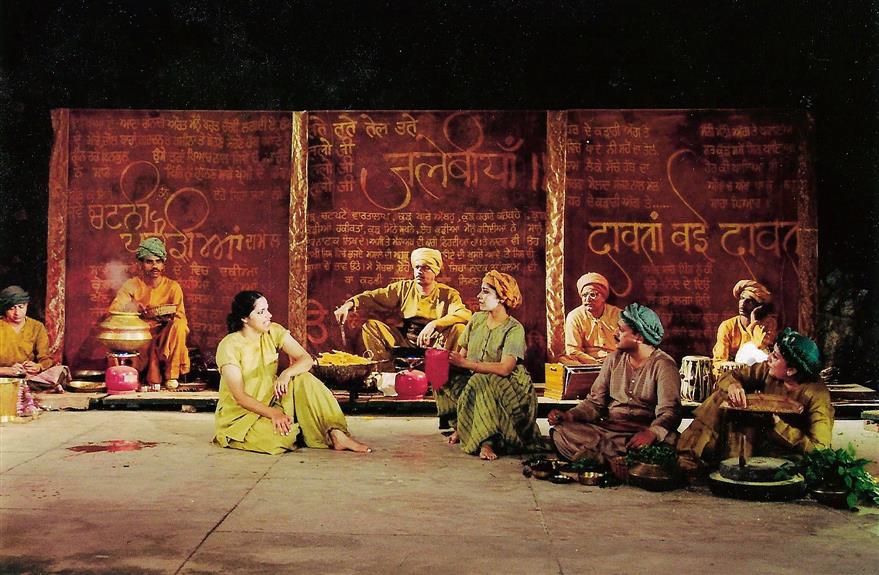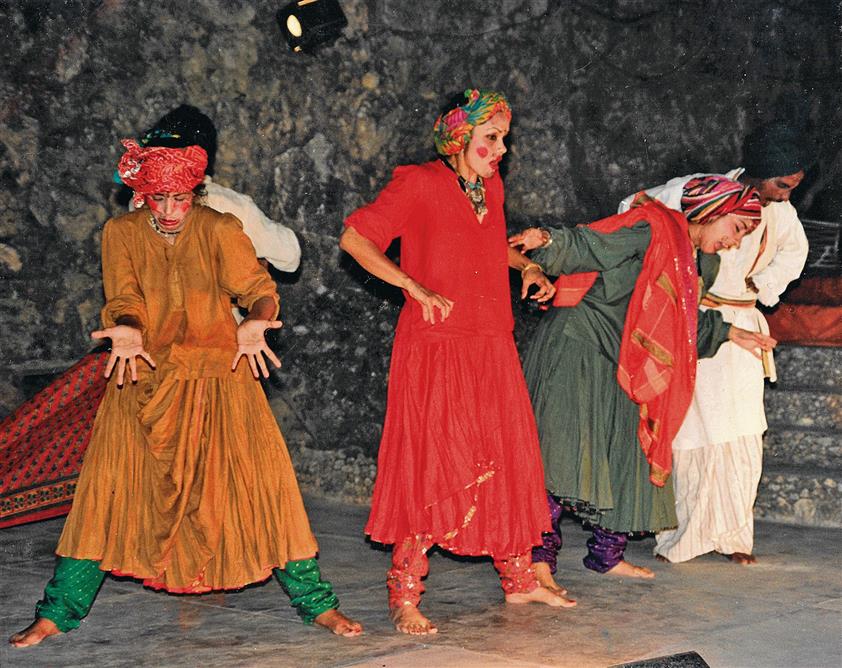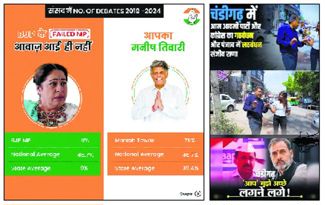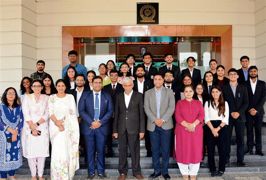
‘Guernica’, Pablo Picasso’s famous mural in black and white, expressed the artist’s outrage against war. istock
Neelam Mansingh Chowdhry
The main interest in life and work is to become someone else that you were not in the beginning. — Michel Foucault
Many years ago, my theatre group was invited to perform ‘Yerma’, by Federico Garcia Lorca, at The London International Festival of Theatre. I wondered how a Spanish play translated into Punjabi by Surjit Patar would be received by a mostly European audience. When a work of art from a different part of the world is showcased in a country or region that does not fully comprehend the context, how is that work received? Is there a framed way of seeing? Can that work travel into another cultural context?

This simple question led to a conversation about our encounters, acts of interpretations in a space that is far removed from the place in which the art was created!

In the last act of the play, the protagonist kills her husband. To avoid portraying it realistically, I tried to show a symbolic killing by making the protagonist hurl a pot of red paint onto a white sheet. In a review, a critic for the popular English newspaper, The Guardian, interpreted the scene by using a reference from his own theatrical history: “It was the blood of Christ, the stilling of the menstrual cycle.” Like an epiphany, I realised that in the absence of a familiar cultural signage, an audience discovers beats that resonate with their own history. Yes, they unearth a shared narrative, but their narrative does not dislocate mine; rather, it illuminates it. Who can say that an audience’s experience of a play is not the play as well?
Resonance is the quality that binds the viewer and the viewed, which is not to suggest a universalism of experience, but a universality of differences. It’s an awareness that differences resonate strongly, sometimes more strongly than sameness. Art seeks to provide entertainment, enlightenment and joy. But the main reason is to displace the ordered regularity, challenging entrenched notions and perceptions within one.
But this review left me grappling with the question of cultural spaces and its limits. Do the local meanings found in the works of the Greek classics, Sanskrit plays, and the works of Shakespeare not carry within them echoes of humanity?
If we look at our nation’s most popular sports, clothing and music, we will find that all of these have a long and complex heritage that travels far beyond national borders. Yet, the dominant and popularised narrative about our cultural identity is one monolithic concept of belonging, whose values of purity, authenticity and homogeneity are all based on a negation of the dynamic exchange that brings all cultures into being.
Can there be limits to one’s influences? As notions of identity are complex, to try and weave a standardised or sanitised version of the self is frightening and soulless.
When I direct a play by Jean Racine or Girish Karnad, I bring the play to the present moment, give space to the characters to unfold and reveal the stories of mankind. Is it the present? Is it a historical moment of the past? Is it an imaginary country or society? As each artistic endeavour carries a baggage of their own histories, interior context becomes the issue that needs to be explored. The story may not always relate to the immediate dilemma that the world may be undergoing, as very often, in literature, films and theatre, we yearn for the fantastic, the impossible, the imaginary. An artist sometimes creates an idealistic world, far removed from the realities that are being confronted.
We all are aware of the need to dream, to fantasise, to imagine and to create stories that help us individually and collectively to deal with the savagery around us. Art becomes a flicker of light in a burning universe. A moment of reprieve from darkness! This is not to suggest that artistic impulses are escapist tools or falsehoods that create a psychobabble, but a necessity that should be nourished and relished.
Yes, conversely, there are artists who depict a world that is dark and fraught with anxieties about the human condition. ‘Guernica’, Pablo Picasso’s famous mural in black and white, expressed the artist’s outrage against war. It is today considered the most powerful indictment against war. The other artwork that comes to mind is Norwegian artist Edvard Munch’s ‘The Scream’, expressing feelings of apprehension and anguish. The quality of angst is evident in every brush stroke.
This brings me to the basic question: is one life the only mainspring of artistic experiences? Must we block other worlds, shut memory and freeze our capacity to explore the mysteries of the universe? How very limiting that would be, to only represent the life one is familiar with! This can numb the senses and create a deep sense of isolation from other experiences, other realities. Androgyny being played by an androgynous character is the new unwritten rule. The real and the reel simulating each other. What happens to acting? To the imagination? The echoing rapport that leads to empathy?
It is only through my work that I can enter hidden gardens, eat the fruit, spew the venom, hear the elusive note, dance with the birds, and become whoever I wish to be. I have been able to lead multiple lives through my work and enriched myself in that process. In ‘Naga-Mandala’, I reflected on how moments of love and happiness are imagined. In ‘Yerma’, I learnt that the artist, and particularly the poet, is always an anarchist in the best sense of the word. He must heed only the call that arises within him; the voice of death, the voice of love and the voice of art. In ‘Phaedra’, I understood systems of patriarchy when Phaedra wails, “How these vain ornaments, how these veils oppress me.” ‘Kitchen Katha’, a play about food, suggested to me that “each of us is born with a box of matches inside us but we can’t strike them all by ourselves”. Working on these plays was my way of leading many lives, of becoming many people, understanding myself.
To lose yourself in what you read and see, by identifying with the characters, is also a way of returning to yourself, transformed into a richer and more layered being.
Join Whatsapp Channel of The Tribune for latest updates.


























